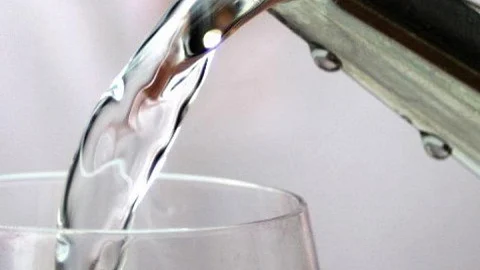
- Topics
- Feature
- Opportunities & Events
- Data
- Hindi Portal
- Topics
- Feature
- Opportunities & Events
- Data
- Hindi Portal

Water pollution is a serious problem in India with 70 percent of its surface and groundwater resources contaminated by biological, toxic, organic, and inorganic pollutants. As a result, the socio-economic cost of poor water quality is high. Around 1.5 million children under five years die each year due to water-related diseases, 200 million person-days of work are lost each year, and the country loses about Rs 366 billion annually due to water-related diseases [1,2].
This article Health and Economic Impact of Unsafe Drinking Water --A Study of Ludhiana published in the Economic and Political Weekly informs that the water quality is affected by both point (single source) and nonpoint sources (diffused sources or those that cannot be connected to a single source) of pollution. These include sewage discharge, discharge from industries, runoff from agricultural fields, urban runoffs, and percolation of chemical substances into the groundwater. Water quality is also affected by floods, droughts, and lack of awareness among users.
This article presents the findings of a study that reviewed the water quality problems and incidence of various water-related diseases and their economic impact on households in the Ludhiana district of Punjab. Data on diseases experienced and costs incurred were collected from 360 households for the year 2009-10.
Households in well-planned localities were classified into very high-income group (VHIG) areas (plot sizes more than 400 square yards), high-income group (HIG) areas (plot sizes varying between 250 and 400 square yards), middle-income group (MIG) areas (plot sizes varying between 125 and 250 square yards), and low-income group (LIG) areas (plot sizes less than 125 square yards). There were mixed areas and slum areas as well.
Although the quality of drinking water supplied to the residents was free from all types of abnormalities at the source according to the City Development Report, the samples collected from the end-use points (households) depicted a different picture with 31 percent of the water samples found to be unsuitable for drinking. Leaking pipes, water storage and the slow movement of water during transmission and distribution contributed to water contamination. This led to many waterborne diseases such as diarrhoea, typhoid, hepatitis A and E. A total of 11,969 cases of water-related diseases were reported in a period of five months in the year 2012 with the outbreak high in the summer season.
A majority of households in the selected localities reported that the initial supply (at the time of opening the tap) of water was contaminated. The coping mechanisms differed according to income groups. The households that had access to water and were financially better off installed water purifiers with Reverse Osmosis (RO) system while others strained and boiled water. This created an additional monetary burden due to increase in consumption of electricity and cooking gas for filtering and boiling.
Poor households that could not afford these methods suffered from diarrhoea, malaria, skin infections, etc. The investment and repair costs per household on water purifiers formed an additional burden on the households. On an average, Rs 600 to Rs 1,200 were borne by various households in different income classes as repair costs.
The number of members affected by various water-related diseases was higher in slums, followed by residents of LIG, MIG and mixed areas. Very less number of diseases were reported from HIG and VHIG.
The water-related diseases, which mainly affected children, were diarrhoea, malaria, cholera, skin infections, etc. Contaminated water, combined with unhygienic surroundings and poor personal hygiene practices, were found to be the causes.
The average number of days that were spent in illness among the population was 23, which led to a loss of school days among children and loss of workdays and the consequent loss of income among adults. These put a considerable economic burden on the households due to the cost for treatment. The low-income households spend a relatively higher proportion of their income to cope with water-related diseases, which further compounded their economic stress.
The paper ends by saying that a number of government institutions and departments are functioning to monitor the quality of water. However, these efforts and investments in water supply and sanitation sector and measures taken by various pollution control boards still have not helped to improve health outcomes. The article argues that there is a dire need to focus on not only the sustainability of water resources in the near future but also that of water quality, as poor water quality can further affect the already dwindling water resources.
A copy of the paper can be downloaded from below: